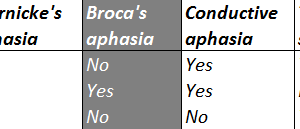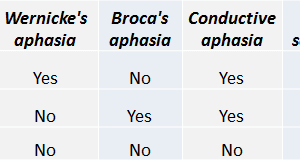A transient ischemic attack (TIA) is a transient disruption of blood flow to an area of the brain. The event usually last only a few minutes. TIA symptoms occur suddenly and may be identical to those of a stroke but resolve, with most residuals of a TIA disappearing within an hour although they may persist as long as 24 hours.
The symptoms that may occur are numbness or weakness in the face, arm, or leg, especially on one side of the body; confusion or difficulty in talking or understanding speech; trouble seeing in one or both eyes; and difficulty with walking, dizziness, or loss of balance and coordination.
A 2007 Japanese study that used diffusion-weighted imaging (DWI) to study TIA patients came to the conclusion that those patients who had visible lesions demonstrated by this means of imaging should be investigated for a cardioembolic source for the embolization. 71% of patients with visible DWI lesions had a demonstrable cardioembolic source.
Only 13% of the patients with visible lesions had large-artery atherosclerosis. Those patients with a cardioembolic TIA had symptoms that lasted an average of 3 hours—longer than artery to artery TIAs.
Risk factors include age, being male, having a positive family history, having had a prior TIA or MI, hypertension, hyperlipidemia, atrial fibrillation, diabetes, carotid artery disease, sleep apnea, alcoholism, and drug abuse.
TIAs are no longer considered to be benign. Statistical analysis of large studies has revealed that they often herald an impending stroke. Since symptoms of a TIA are identical to those of a stroke, since ischemic strokes are now treated with thrombolytic therapy, since this therapy must be administered within 180 minutes of the onset of symptoms, patients who experience TIA symptoms should have their emergency care expedited.
Not only does this mean that immediate lab functions and imaging studies must be performed, it also means that the differential diagnosis must be assessed in a rather acute fashion. The differential includes glucose derangement, migraine, seizure, postictal states, and tumors.
Of these, perhaps migraine can be the most difficult to distinguish from a migraine. Migraine patients tend to be younger and may have a history of prior episodes. In addition, migraines are more commonly associated with headache, nausea, and photophobia. The onset of a migraine may also be much more gradual than that of a TIA which is typically quite sudden.
Physical exam should begin with a general inspection of the patient, looking for signs of trauma, etc. Carotid arteries should be examined for quality of upstroke and any bruits. Head and neck exam should include a check for any nodular or tender arteries—particularly in the temporal area. Funduscopy should look for retinal plaques, pupil reaction to direct and consensual light exposure. Cardiovascular exam should look for murmurs, signs of congestive failure, irregular cardiac rhythms, and character of peripheral perfusion. A complete neurological examination including cranial nerve testing, somatic motor strength, somatic sensory testing, cerebellar testing, and mental status.
Lab studies should include biochemical and electrolyte profile, coagulation studies, CBC with platelet count, renal functions, and an ESR. An EKG should also be performed.
A CT scan of the head without contrast should be used to identify subarachnoid hemorrhage, intracranial hemorrhage, or subdural hematoma—hemorrhage removes treatment with tPA or anticoagulants from consideration. Ct scanning also identifies tumors and other masses, signs of early brain damage or evidence of old strokes. Because of bony artifact, MRI should be used to evaluate the brainstem or cerebellum.
Transesophageal echocardiography is superior to transthoracic echocardiography for examining the left atrium in an attempt to define thrombus, a patent foramen ovale, atrial septal defects, and aortic plaque. The findings from the DWI studies would thus demonstrate the importance of transesophageal echocardiography in patients without an identifiable cause of TIA or known cardiac disease to those conditions requiring therapeutic intervention such as anticoagulation.
An MRI also has a clear advantage over CT in that it can better evaluate tissue details and does not involve radiation. However, it has a disadvantage in that it might not identify hemorrhage. Thus, CT scan is the recommended modality for an initial workup. If a cerebrovascular malformation, aneurysm, cerebral venous thrombosis, or arteritis is suspected, MRI s preferred.
Carotid duplex ultrasonography may be helpful in evaluating cerebral and cervical vessels, but care should be taken to insure the accuracy of the laboratory doing the study.




